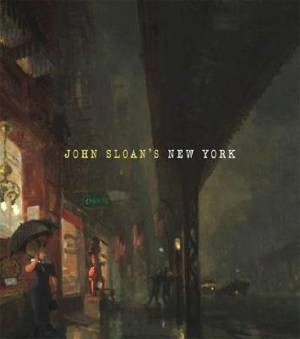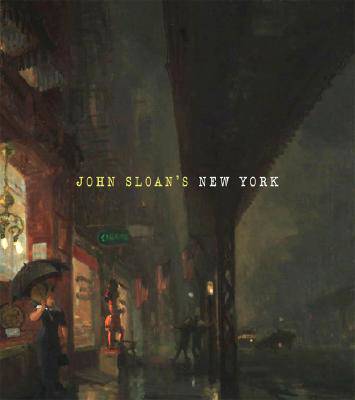
- Retrait gratuit dans votre magasin Club
- 7.000.000 titres dans notre catalogue
- Payer en toute sécurité
- Toujours un magasin près de chez vous
- Retrait gratuit dans votre magasin Club
- 7.000.000 titres dans notre catalogue
- Payer en toute sécurité
- Toujours un magasin près de chez vous
John Sloan's New York
Joyce K Schiller, Heather Campbell Coyle, Molly S Hutton, Susan Fillin-Yeh, Katherine E Manthorne, Alexis L Boylan
Livre relié | Anglais
62,95 €
+ 125 points
Description
A close look at early-20th-century New York City through the eyes of Ashcan artist John Sloan
John Sloan (1871-1951) began his career as a commercial newspaper artist in Philadelphia where he studied with Robert Henri. Following Henri to New York, Sloan joined a small circle of eight talented artists whose dissatisfaction with the dominating National Academy led to a protest exhibit in 1908, the emergence of a powerful movement for change in American art, and ultimately to the famous Armory Show of 1913. It was in part Sloan's dark palette and views of city streets and working-class life that gave rise to the epithet now used to describe the works of the "Ashcan School." Sloan's compelling images of New York City are the subject of this generously illustrated book. His paintings, drawings, and prints clearly reflect his own experience of the city as he walked its neighborhoods and observed human dramas played out in streets and apartments. The contributors to the volume investigate a variety of topics, including Sloan's understanding of the urban experience in America, his interest in social reform, his fascination with moving pictures and cinema aesthetics, and his relationship with Henri. The authors also situate Sloan's paintings within the geography and social fabric of New York. John Sloan's New York presents a unique perspective on New York and its people and also on the artist himself, who was captivated by the soul of the city. Published in association with the Delaware Art Museum
Exhibition Schedule:
Delaware Art Museum (October 20, 2007 - January 20, 2008)
Westmoreland Museum of American Art, Greensburg, Pennsylvania (February 10 - April 27, 2008)
The David and Alfred Smart Museum of Art, Chicago (May 22 - September 14, 2008)
Reynolda House Museum of American Art, Winston-Salem, North Carolina (October 4, 2008 - January 4, 2009)
Spécifications
Parties prenantes
- Auteur(s) :
- Editeur:
Contenu
- Nombre de pages :
- 208
- Langue:
- Anglais
Caractéristiques
- EAN:
- 9780300126198
- Date de parution :
- 29-11-07
- Format:
- Livre relié
- Format numérique:
- Genaaid
- Dimensions :
- 249 mm x 288 mm
- Poids :
- 1428 g

Les avis
Nous publions uniquement les avis qui respectent les conditions requises. Consultez nos conditions pour les avis.






